The 6 strangest gadgets from Mobile World Congress 2018
BARCELONA — Any gadget gathering the size of Mobile World Congress won’t just feature items that solve an obvious consumer need in a predictable manner. You’re also going to run into hardware that defies expectations — and sometimes explanations.
Here are six that to do both.
Huawei’s pop-up webcam
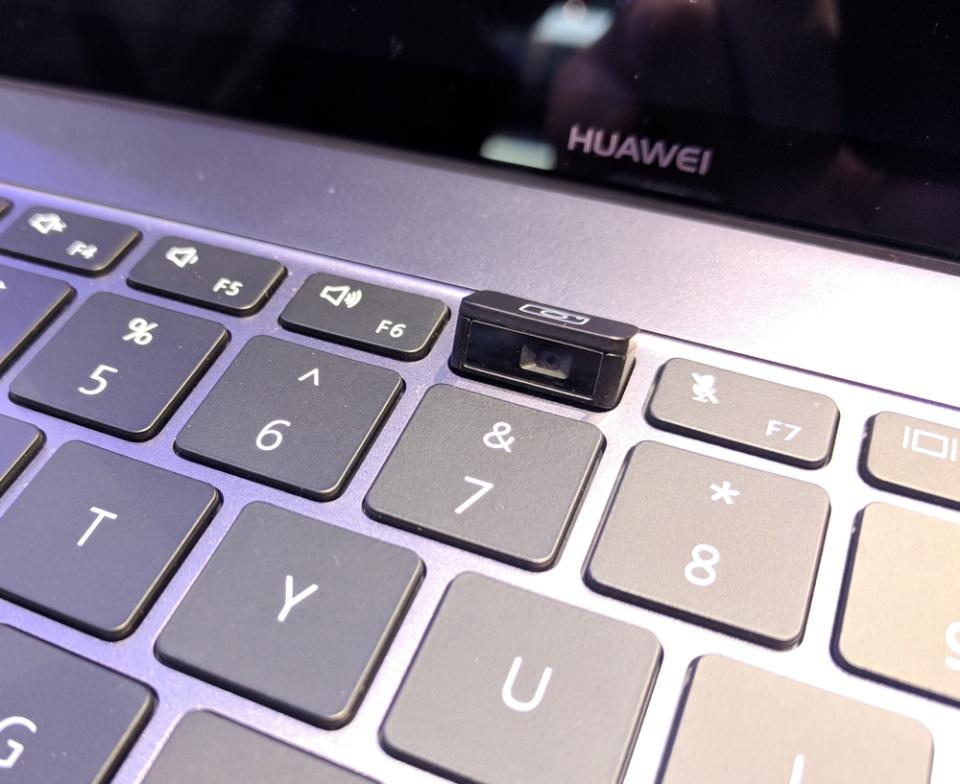
When this manufacturer decided to max out the screen size on the upcoming MateBook X Pro laptop to 13.9 inches, there was no room left at the top or bottom of the screen bezel for the traditional webcam. Meanwhile, Huawei’s designers noted how many people now cover the webcam on their own laptops.
Which is why the row of function keys on this €1899 laptop includes a hidden camera. Press it, and the webcam pops up for your next Skype call or Google (GOOG, GOOGL) Hangout. It’s angled up to catch your face — and, unavoidably, your nostrils.
Nokia’s banana phone
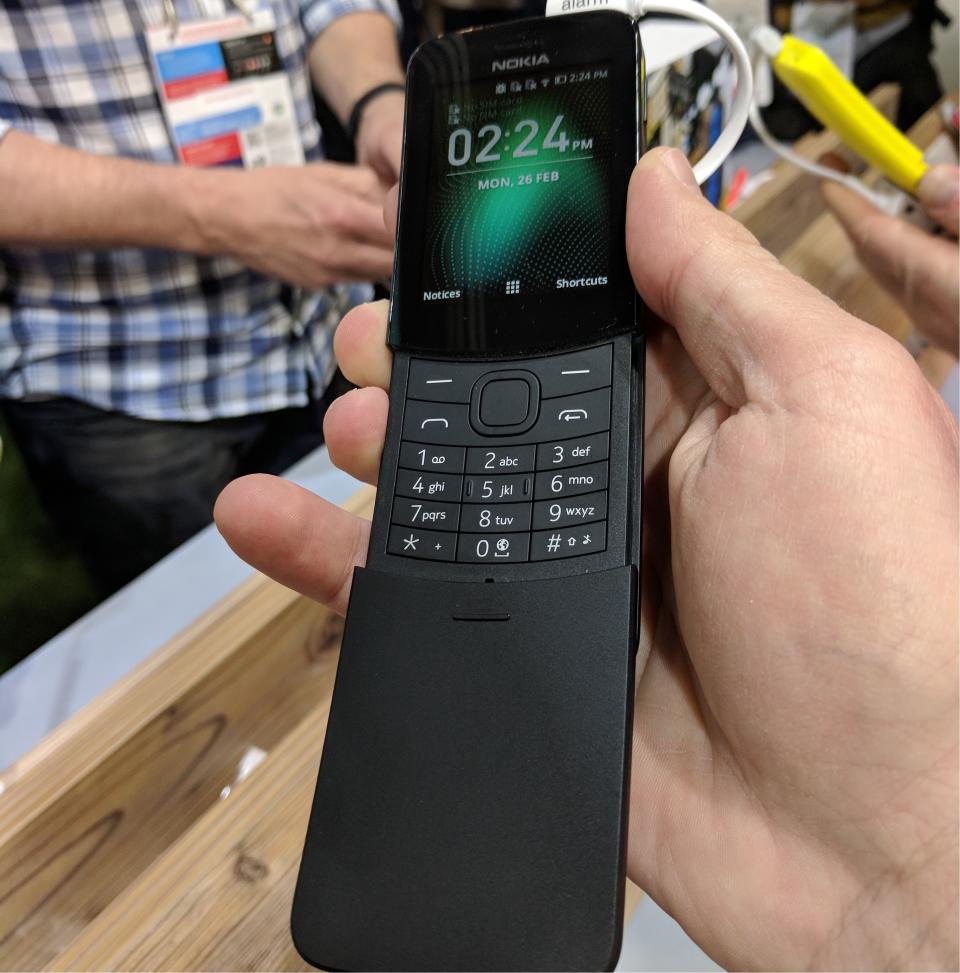
Beyond a sharp-looking set of Android phones distinguished by their up-to-date, unaltered versions of Google’s operating system, Nokia (as in, the HMD Global firm that licenses the name) unveiled the 8110 4G.
You’ve seen a phone like this before — either because you used the original 8110 in the 1990s or because you saw Keanu Reeves take a life-altering call on one in The Matrix. This relaunched version will presumably not lead you to take the red pill when it ships in April for €79 (U.S. availability remains unclear). But it will offer 4G connectivity, voice-over-LTE calling, dual SIM slots allowing you to switch between carriers, and a battery life measured in days.
Dynamics’ connected credit card
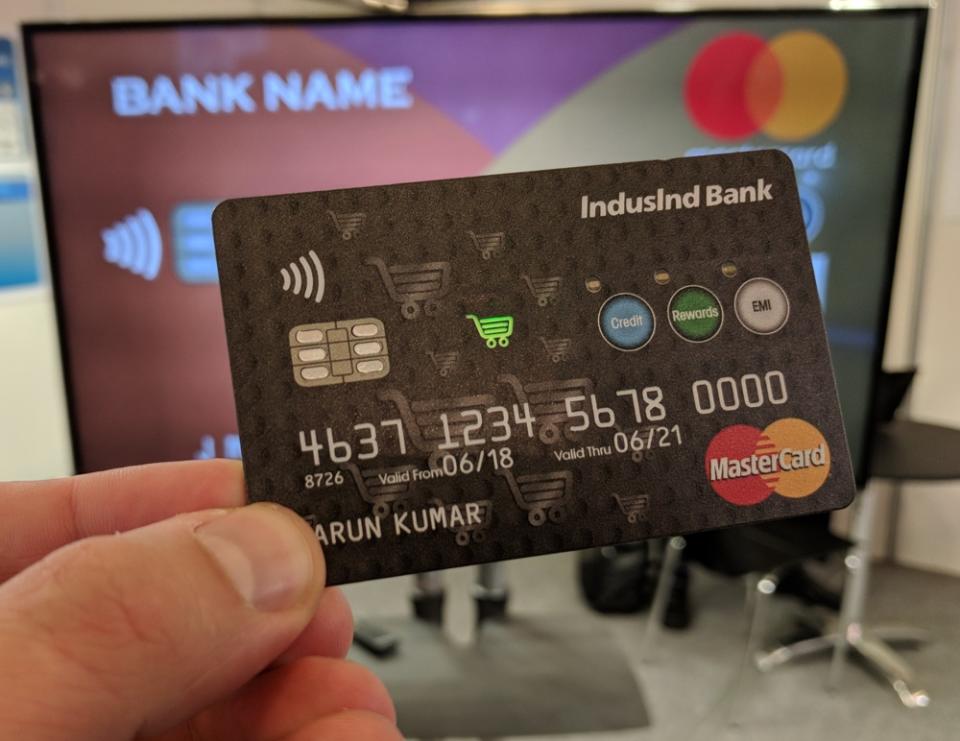
The uncreatively named Wallet Card may be the thinnest wireless device you’ll ever use. This credit card packs in a battery that recharges itself through everyday movement (Pittsburgh-based Dynamics isn’t quite clear on how that works), a small e-paper display, simple buttons and a cellular transmitter.
The idea is that banks that issue the card and can then talk to it in real time — for instance, sending out a new account number if the old one gets compromised, or asking the cardholder if they’d like an increase in their credit limit. So far, Dynamics has lined up commitments from such card issuers overseas as Japan’s Sumitomo Mitsui but has no U.S. deals announced yet.
CAT’s laser-equipped, air-sniffing phone
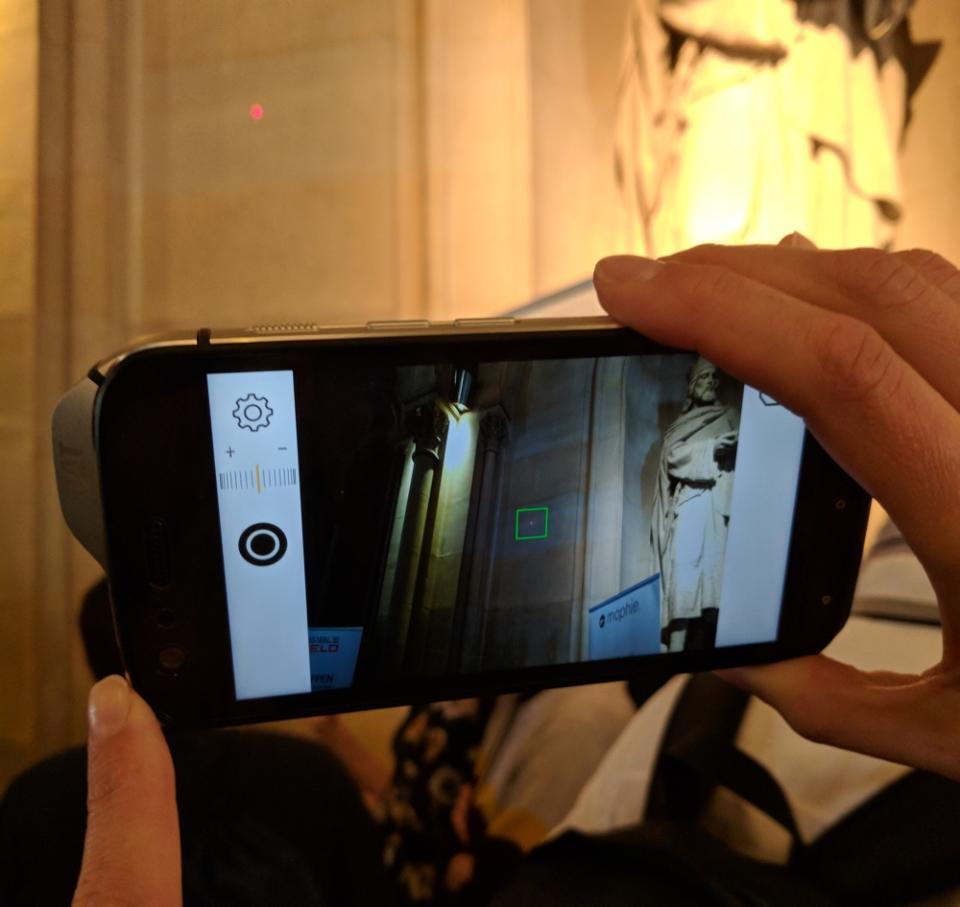
CAT’s (CAT) chunky, ruggedized S61 Android phone features some unusual tools intended for builders, contractors and very ambitious home-improvement types that help explain its $999 price. It includes a FLIR infrared camera to visualize hot or cold spots in a house, a laser distance sensor that can measure up to about 32 feet away, and an air-quality sensor that can warn of dangerous levels of, for instance, the volatile organic compounds in most paint. It also runs Google’s latest version of Android, which is both nice to see, and not a given in smartphones.
Modius: Will this headband make me look less fat?
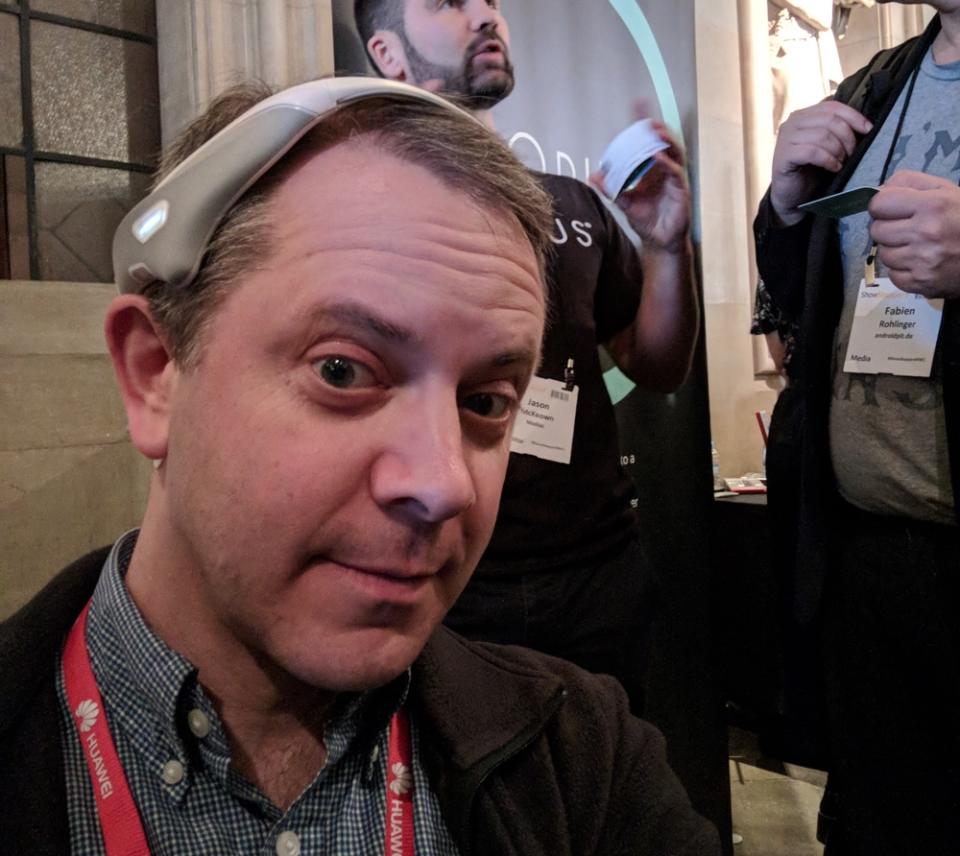
The weirdest wearable I tried at MWC was the white headband from Modius Health, which the company says suppresses your appetite by electrically stimulating your vestibular system. (It’s yet to get FDA approval for that use.) The Belfast firm advises wearing it for an hour a day until you lose the weight you want, at which point you can step back.
I tried one for a few minutes and can report that it felt like I was being massaged behind the ears by small biting insects. I can also report that the odds of that brief treatment helping me lose weight here must be near zero, given all the ham and cheese I’ve gobbled at various MWC receptions.
Asus’s notch

Asus introduced its latest lineup of Android phones Tuesday night, and the ZenFone 5 got the most stage time. This Android phone, starting at €479, ships with a variety of artificial-intelligence routines to finesse things like taking pictures, optimizing charging times to prolong the battery’s lifespan, and setting the ringer volume to match your environment. It also features a 6.2-in. screen that takes up 90% of the front of the phone.
Which means, yes, it has a notch at the top like that of the Apple (AAPL) iPhone X to avoid subjecting its users to the indignity of a full-width bezel for the front cameras and other sensors. Global marketing head Marcel Campos bragged onstage that Asus made a smaller notch than Apple: “Our notch is 26% smaller than the fruit phone!”
Yes, “fruit phone.” What is this, high school?
More from Rob:
Follow Yahoo Finance on Facebook, Twitter, Instagram, and LinkedIn
Email Rob at [email protected]; follow him on Twitter at @robpegoraro.
